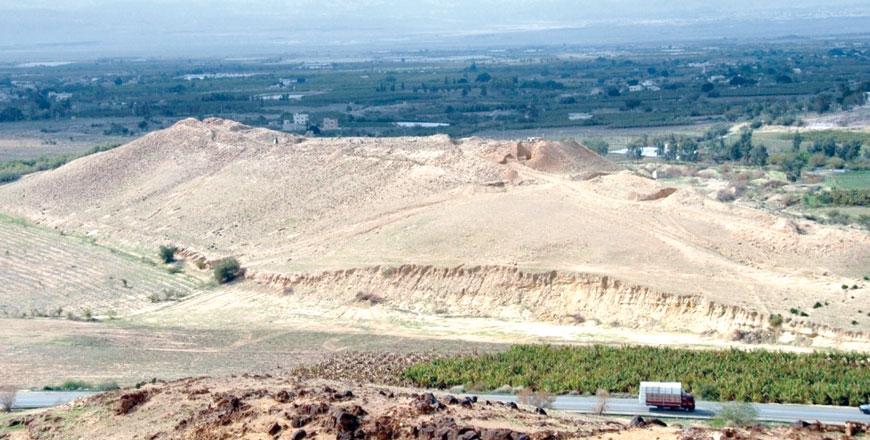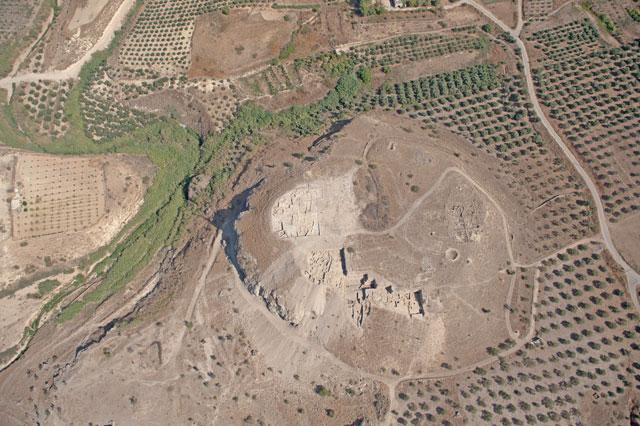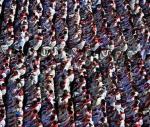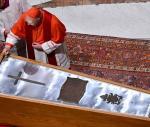You are here
‘Tell Al Hammam offers clues to blank page in region’s history’
By Saeb Rawashdeh - Apr 24,2019 - Last updated at Apr 24,2019

In this photo taken in 2018, a view of the Tell Al Hammam archaeological site, 14km northeast of the Dead Sea can be seen. The site is the third largest Middle Bronze Age site in the southern Levant (Photo courtesy of the Tell Al Hammam Project)
AMMAN — Tell Al Hammam, a site northeast of the Dead Sea, can help researchers understand “city states” in the southern Levant, and perhaps why the area around the site was abandoned for 600 years, according to archaeologist Mohammad Najjar.
It is the largest Early Bronze Age site and the third-largest Middle Bronze Age site in the southern Levant, Najjar said in a recent interview with The Jordan Times.
Najjar has followed the site since the Tell Al Hammam Project was established there 15 years ago, when he served as director of excavations and archaeological survey at the Department of Antiquities.
“Every year, I was visiting the site during the field season. Last year, the project’s director asked me to join as senior archaeological consultant,” Najjar noted, adding that he was asked because his PhD dissertation was about this particular historical period.
However, not many sites of from the period have been excavated in Jordan, which created a false impression that the land to the east of the Jordan River were on the periphery at the time, as opposed to the core in the land to the west of the river, Najjar underlined.
He added that excavations at Middle Bronze Age sites like Pella and Tell Al Hammam will help fill the gaps in our knowledge on the region.
The site dates back to the Neolithic period, 8,000 years ago, according to the archaeologist.
“The site was occupied uninterruptedly until 1,650 BC. A gap that lasted for 600-700 hundred years was documented in the site’s occupational history,” Najjar elaborated, noting that occupation restarted during the Iron Age (9th century BC) and lasted until modern times.
“It is clear that Tall Al Hammam was a major city with a huge fortification system that included walls, monumental gates and towers. Last year, we started to excavate the Middle Bronze Age palace and we have plans to continue exposing this important administrative building, hoping to find the palace archives,” he said.
Furthermore, Tell Al Hammam was the centre of a city state that included the town itself and probably up to five satellite sites that can be visually seen from the main site, he explained.
“At least 26 hectares of the city were inside the city walls, so the population could easily have exceeded 26,000, according to certain calculations,” Najjar underlined.
Archaeological evidence and scientific analysis showed that the city was suddenly destroyed and abandoned for the more than 600 years that followed.
“No traces of war or earthquakes were noticed in the archaeological record,” the archaeologist said, adding that petrified pottery sherds, bricks and stones point to an airburst meteoric explosion at the northern tip of the Dead Sea which may have caused the destruction.
This theory is supported by a 6 per cent salinity rate found in the soil at the site, which poisoned the ground for 600 years, Najjar said.
The salt originated from the Dead Sea approximately 10km to the southwest of the site, Najjar added, noting that the salt in the soil “couldn’t be explained as sedimentary salts from the ancient Dead Sea because at its highest level, 18 thousand years ago, the Dead Sea’s waters were lower.. than the top of the site of Tell Al Hammam”.
“Most probably the Dead Sea salts were transported to the site or the sites in the area by a shock and heat wave caused by the impact,” Najjar underscored.
Related Articles
AMMAN — Bayesian modelling, a method of statistical analysis, applied to Radiocarbon dating, has changed perceptions of the Early Bronze Age
AMMAN — Cultural transitions have always been of particular interest to scholars, said Katja Soennecken, assistant director for the German P
AMMAN — A recently published book details the efforts of Jordanian scholars and archaeologists that resulted in the discovery of Prophet Lut


















